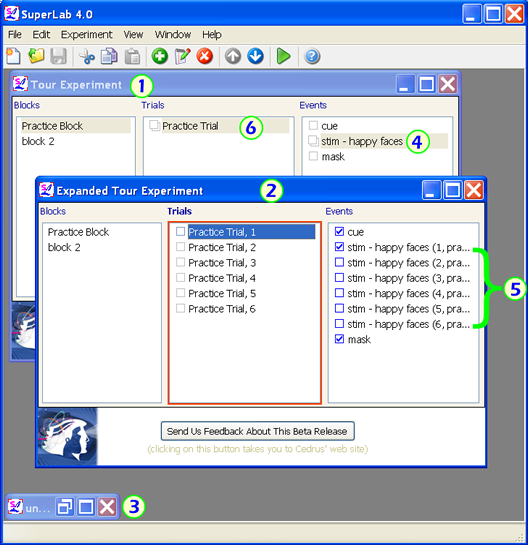
-
You can now have multiple experiments open at the same time (see the circles 1, 2, and 3 in the screen snapshot)
-
A different checkbox next to a trial or event indicates whether it is using a list or not circles 4 and 6 )
-
SuperLab 4.0 provides an "expand" feature. For example, the "Tour Experiment" (circle 1) contains an event named "stim - happy faces" that uses a list. This list has 6 picture files. When you use the "expand" feature, a new experiment window opens (circle 2) with the original "stim - happy faces" event now converted into 6 events (circle 5) and the original "Practice Trial" converted into 6 trials, all properly linked, of course.
| Trial Variable Type |
Example of Use |
|---|---|
Color |
Vary the words being presented by color |
Number |
Create a "set" of numbers, e.g. 50, 100, 150, and 200, and then vary an inter-stimulus interval based on a number picked from this set |
Location on the Screen |
Create a set of four screen locations, then tell SuperLab (in the Event Editor) to present the stimulus at one of these four locations, either at random or in sequence |

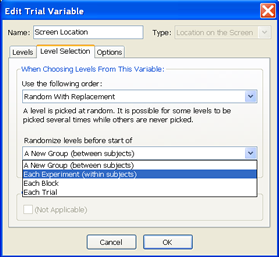
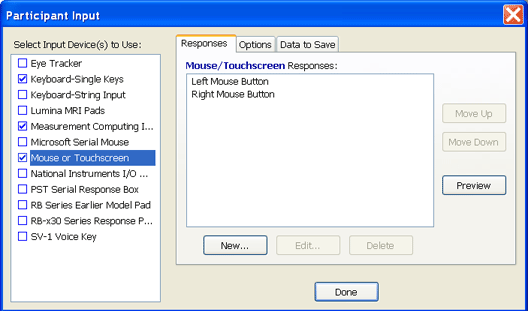
-
SuperLab now supports string input, e.g. a participant can now type complete sentences
-
A response can now consist of a key release instead of key press
-
A response can be deleted or renamed; instead of being stuck with the default "Button 1", you can now rename it to, for example, "Target (blue key)"
-
A correct response can now be "None", making it easier to develop Go/No-Go experiments
-
A response can now be linked to an event's code value instead of the event itself, making it much easier to develop recall/memory experiments
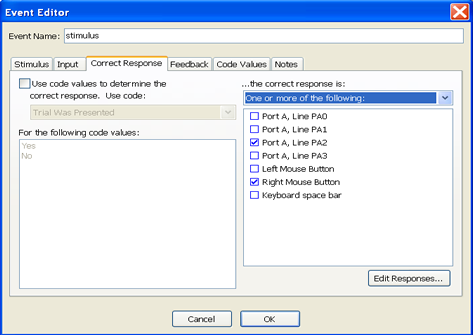
| New Event Types |
Notes |
|---|---|
Movies |
Present one or several on the screen at the same time |
Self-Paced Reading |
E.g. enter "SuperLab 4.0\now supports\self-paced reading" and SuperLab will take care of breaking the sentence into three segments and presenting them one after the other |
RSVP |
Works similarly to self-paced reading except that a new segment is displayed on top of the previous one |
Eye Tracker Command |
Cedrus is working with eye tracker manufacturers to integrate eye tracker support into the program |
Enhanced Event Types |
Notes |
|---|---|
Picture File |
- Use JPEG, GIF, PNG, and TIFF file formats; on the Mac, you can additionally use any file format - Present multiple pictures simultaneously |
Text |
Text is no longer limited to a single line. You can also display variables, e.g. enter "Thank you for participating in this experiment, $(ParticipanName)" and the participant's name will be displayed |
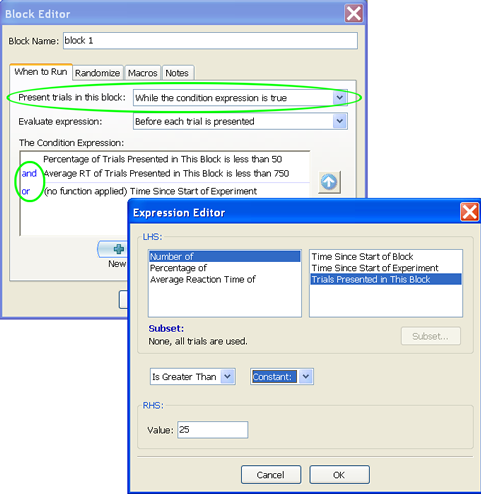
-
You can build powerful expressions like the one shown above very easily -- no programming just as promised
-
Trials in a block can be presented if the expression is true or false, but also SuperLab can "loop", i.e. keep presenting trials in the block until the expression becomes true or false
-
You can simply click on the "or" and "and" logical operators to form complex expressions
-
An expression similar to the one you saw in the previous slide. When an expression is evaluated by SuperLab, the result is always true or false.
-
A set of "actions" that SuperLab 4.0 should take if the expression evaluates to "true"
-
An alternate set of actions that SuperLab 4.0 should take if the expression evaluates to "false"
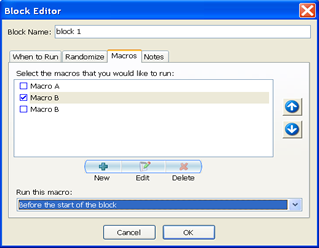
-
Unicode Support: Asian and other international fonts can be used with the same ease as English and Western fonts
-
Support for MRI: SuperLab can now present trials at precise intervals
-
Deep Integration with Eye Tracker: Cedrus is presently working with four eye tracker manufacturers to make it a snap to use an eye tracker in your experiment (SuperLab X4 edition only)
-
Support for ERP/EEG: SuperLab can now pause and resume an experiment. The final version 4.0 will also provide the ability to have certain events automatically presented on start, pause, resume, or termination of an experiment. This comes in handy when you want to automatically pause the ERP recording when an experiment is paused or terminated.
-
Cross Platform Experiments: Experiments can now be easily moved between Windows PCs, PowerPC-based Macs, and Intel-based Macs.
-
Randomize Events: within a trial (in addition to randomizing trials within a block)
-
Participant Groups: make it easier to create between-subject designs